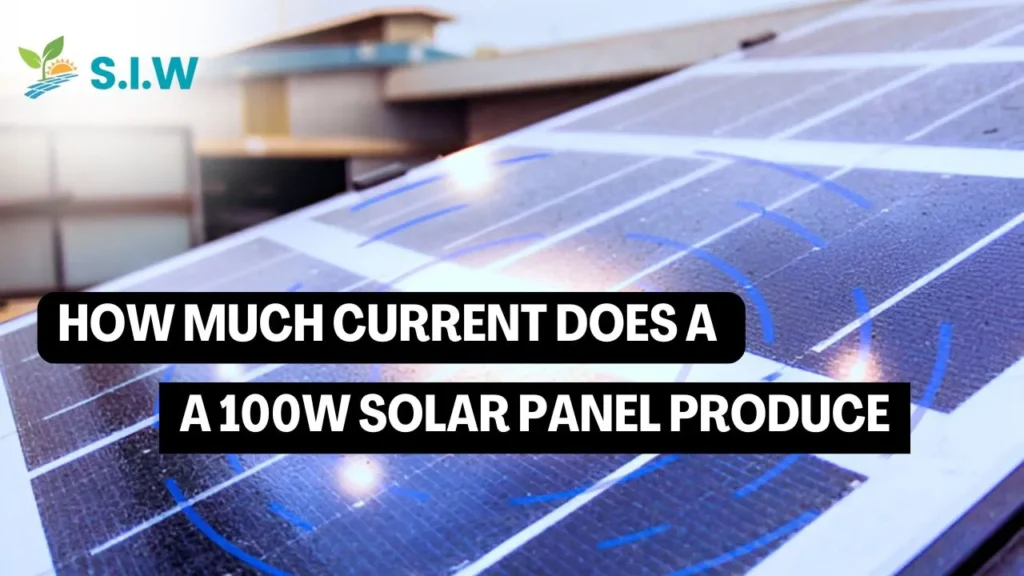Harnessing solar energy has become increasingly popular, and understanding the performance of solar panels is essential for optimizing your setup. One of the key factors to consider is how much current a 100W 12V solar panel generates, as this determines how effectively you can charge batteries and power devices. In this article, we will dive deep into the calculations and variables that influence the current output of a 100W 12V solar panel.
Understanding Solar Panel Ratings
Solar panels, especially those offered by the best solar companies in California, are rated based on their wattage and voltage, which helps us understand their power output under standard test conditions (STC). For example, a 100W solar panel from a top-rated provider signifies that the panel can produce 100 watts of power under ideal sunlight conditions, typically with sunlight intensity of 1000 watts per square meter and at a temperature of 25°C (77°F).
The voltage rating, in this case, 12V, indicates the voltage at which the panel operates under STC. However, in practice, the actual operating voltage might be slightly higher or lower depending on various factors like temperature, sunlight intensity, and the load connected to the panel
Calculating the Current Output
To calculate the current produced by a 100W 12V solar panel, we use the formula:
Current (Amps)=Power (Watts)Voltage (Volts)\text{Current (Amps)} = \frac{\text{Power (Watts)}}{\text{Voltage (Volts)}}Current (Amps)=Voltage (Volts)Power (Watts)
For a 100W 12V solar panel:
Current=100W12V=8.33A\text{Current} = \frac{100 \text{W}}{12 \text{V}} = 8.33 \text{A}Current=12V100W=8.33A
Therefore, under optimal conditions, a 100W 12V solar panel can produce approximately 8.33 amps of current. However, it’s important to note that this is the maximum current output, achievable only under perfect conditions.
Factors Influencing Current Output
The actual current output can vary depending on several factors:
- Sunlight Intensity: The amount of sunlight reaching the panel is a critical factor. On cloudy days or during early morning and late afternoon, the sunlight intensity is lower, reducing the current output.
- Temperature: Solar panels are tested at 25°C, but in real-world conditions, the temperature can be higher or lower. Higher temperatures can reduce the efficiency of the panel, thereby reducing the current output.
- Panel Orientation and Angle: The orientation and tilt angle of the solar panel relative to the sun play a significant role in maximizing sunlight exposure. Incorrect positioning can lead to reduced current output.
- Shading: Even partial shading of the panel can significantly decrease the current output, as it reduces the amount of sunlight hitting the solar cells.
- Dust and Dirt Accumulation: Over time, dust and dirt can accumulate on the surface of the panel, obstructing sunlight and reducing the current output. Regular cleaning is necessary to maintain optimal performance.
Practical Applications of a 100W 12V Solar Panel
A 100W 12V solar panel is versatile and can be used in various applications. Here are some practical uses:
- Charging 12V Batteries: One of the most common uses is charging 12V batteries. With an average current output of 8.33 amps, this panel can effectively charge a 12V battery, making it ideal for off-grid systems, RVs, and boats.
- Powering Small Appliances: Depending on the appliance’s power consumption, a 100W 12V panel can run small devices like LED lights, fans, and small pumps. However, for larger appliances, multiple panels may be needed.
- Running Portable Electronics: For outdoor enthusiasts, a 100W 12V solar panel can keep portable devices like smartphones, tablets, and GPS units charged while on the go.
- Supplementing Home Solar Systems: While a single 100W panel may not be sufficient to power an entire home, it can be used to supplement larger solar installations, helping to reduce overall electricity costs.
Maximizing the Efficiency of Your Solar Panel
To get the most out of your 100W 12V solar panel, consider the following tips:
- Optimal Placement: Ensure your panel is positioned to receive maximum sunlight throughout the day. Typically, this means facing south (in the Northern Hemisphere) and tilting the panel at an angle equal to your latitude.
- Use a Solar Charge Controller: When charging batteries, use a solar charge controller to regulate the current and prevent overcharging, which can damage the battery.
- Regular Maintenance: Clean the panel regularly to remove any dirt, dust, or debris that might reduce its efficiency. Additionally, check for any signs of wear or damage.
- Monitor Performance: Use a monitoring system to track the performance of your panel. This can help you identify any issues early and ensure your panel operates at peak efficiency.
Conclusion
A 100W 12V solar panel is a highly useful and versatile component in solar power systems for home, capable of producing around 8.33 amps under optimal conditions. However, real-world factors such as sunlight intensity, temperature, and shading can influence the actual current output. By understanding these factors and following best practices for panel placement and maintenance, you can maximize the efficiency and effectiveness of your solar setup.








